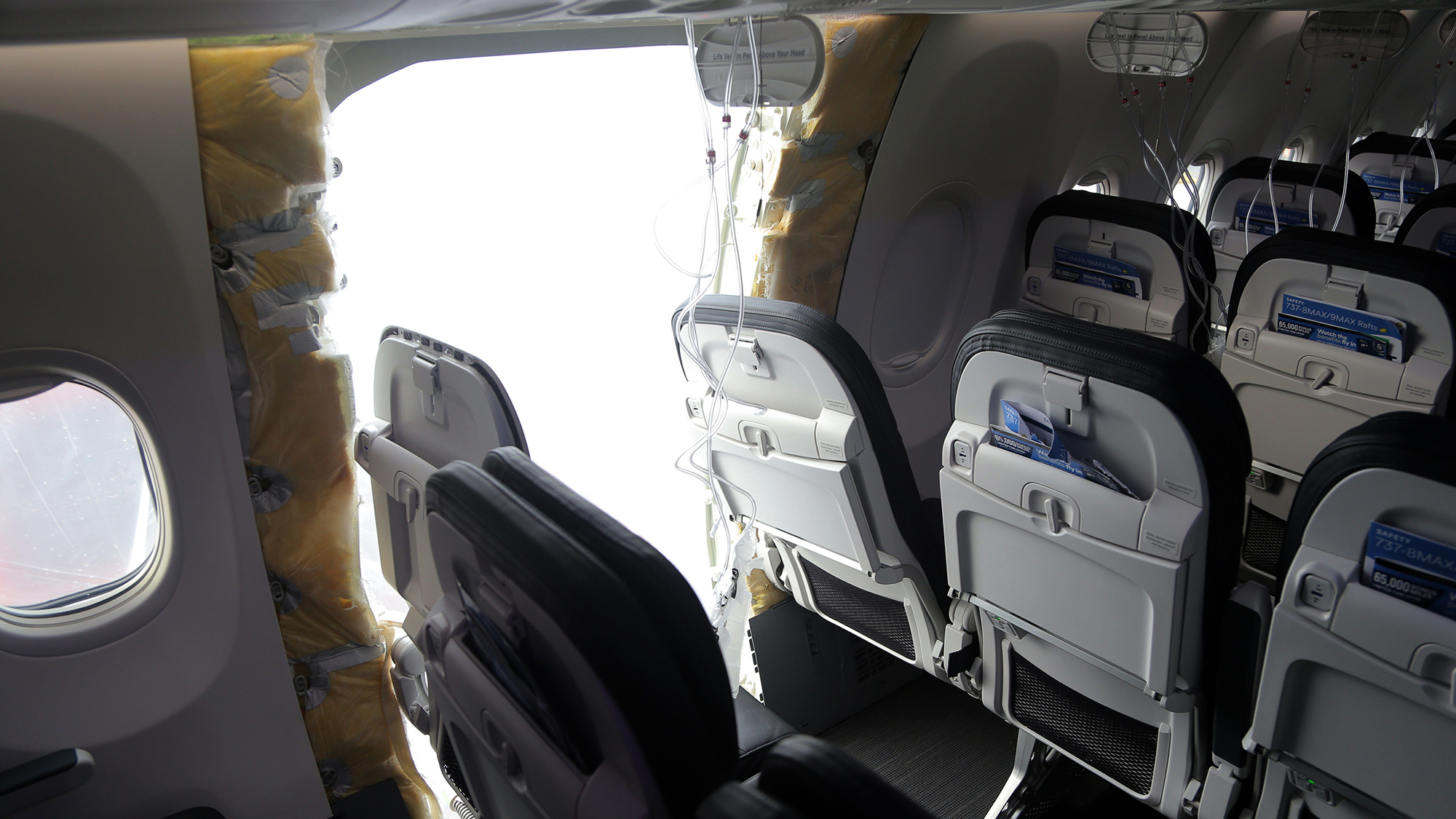

The Federal Aviation Administration announced immediate “new and significant actions” to its increased oversight of Boeing’s aircraft manufacturing and production processes on Friday—one week after an Alaskan Airlines Boeing 737 Max 9 plane made international headlines when one of its emergency door plugs blew off mid-flight, jettisoning travelers’ personal items, and forcing an abrupt return to its departing airport. National Transportation Safety Board officials recovered the door plug from the backyard of a Portland, OR, schoolteacher on Sunday.
Approximately six minutes after departing Portland International Airport on January 5, Alaskan Airlines Flight 1282 suddenly lost one of its emergency door plugs while at an altitude of 16,000-feet. Door plugs are installed in place of certain emergency exits if a jet is only outfitted for a lower number of passengers.
Footage supplied by travelers aboard the plane to The New York Times shows a gaping hole on the 737 Max 9’s left side as yellow emergency oxygen masks dangle in front of frightened travelers. None of the flight’s 171 passengers and six crew members were reported seriously injured following its emergency return landing at PIA. An initial assessment provided by NTSB officials indicates none of the door plug’s four bolts had been installed. The 737-9 involved in last week’s emergency had previously been in service since November 2023.
After grounding 171 Boeing 737 Max 9 planes pending further inspections last week, the FAA has now announced that it will begin an audit of the Boeing 737 Max 9 production process, as well as the company’s suppliers. Results of the initial audit will determine if further investigations are required. Meanwhile, the FAA intends to increase its monitoring of Boeing 737 Max 9 in-service events, as well as assess safety risks, quality control, and delegated authority decisions with the potential to transfer these responsibilities to outside, independent entities.
“It is time to re-examine the delegation of authority and assess any associated safety risks,” said FAA Administrator Mike Whitaker in Friday’s announcement. “The grounding of the 737-9 and the multiple production-related issues identified in recent years require us to look at every option to reduce risk.”
The FAA previously reported that the jets will remain grounded until all emergency door plugs are evaluated, and on Friday noted “the safety of the flying public, not speed, will determine the timeline for returning the Boeing 737-9 MAX to service.” Hundreds of 737-9 Max 9 flights have been canceled since January 5’s emergency landing, while United Airlines has discovered loose door plug bolts in at least one of its own 737 Max 9 planes.
[Related: Here’s what to know about the Japan Airlines collision.]
The FAA’s oversight announcement arrives one day after the agency issued a letter to Boeing informing the company of an investigation into its planes’ design and production safety. This is not the first time Boeing’s line of 737 planes has faced scrutiny after emergencies. Fatal international crashes in 2018 and 2019 resulted in Boeing grounding all its 737 Max aircraft for nearly two years, with the company ultimately paying $2.5 billion in a settlement with the Department of Justice to avoid criminal charges.
In the week since the emergency, Alaskan Airlines issued full refunds to all Flight 1282 passengers alongside $1,500 “to assist with any inconveniences.” Meanwhile, at least six passengers have already filed a lawsuit against Boeing, in which they allege some of the plane’s oxygen masks did not appear to function during the ordeal.
